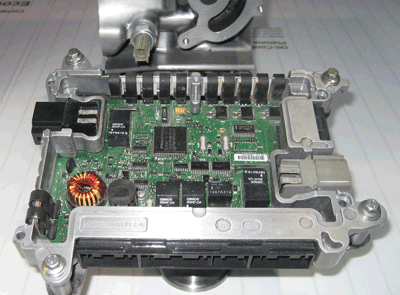The powertrain control module, otherwise known as the PCM or computer, is essentially your vehicle’s brain. It is responsible for the health running of your vehicle’s engine. When the PCM is not functioning correctly, the engine and many other functions that are controlled by the PCM will not function correctly either. This would include parts of the electrical system such as the charging process, communications with other on-board control modules, emission controls, and the transmission. It monitors so many different systems and a bad PCM can lead to serious problems with almost every aspect of your vehicle.
Everything in the world has an existence cycle starting from emergence to death. Basically, two main reasons are account for a bad PCM and knowing them may help to reduce the risk of the same problem from happening again. The first is environmental issues, thermal stress, corrosion, or vibration can all cause a PCM to die. Micro-cracks in the circuit boards caused by vibrations and thermal stress can usually be repaired quite easily by a PCM re-manufacturer. However, if it is water damage, there’s no other choice but to replace the PCM. The second one is usually a voltage overload. Voltage overload can be caused by a short in an actuator circuit or solenoid. If this is the case, the shorted actuator or solenoid must be repaired or it can create another overload to damage your new PCM.
“Fixing” a bad PCM is an extremely complicated process. Although a PCM repair always involves intricate circuit board repairs requiring lots of time and effort which need to be carried out by a trained professional with appropriate knowledge and materials, vehicle owners can benefit from learning first about how to diagnose these PCM issues.
If there’s a problem with your car’s PCM, there are many symptoms you can tell from. Naturally, a PCM malfunction can present first as a problem in one of the systems it controls. But it can be tricky, for example, a “Check Engine” light in the dash may engage. A driver’s first instinct, as a result, is to check the engine or take it into a mechanic. After many mechanical issues have been ruled out, your eyes start to put on the PCM. And this time, you need professional help. Apart from this, several unrelated trouble codes are set simultaneously, vehicle cannot start or run, poor engine performance and engine stalling are among the symptoms of a failed PCM. Another more obvious sign is when all the dashboard error lights engage and disengage continuously.
To determine whether these trouble signs stem from the PCM, next, you can use a code reader to link to the PCM to identify. These devices connect directly into a port known as the Onboard Diagnostic or OBD-II connector port. After plugging it in, you should turn on the car to engage the car scanner with engine off. The device will initialize and begin the scanning procedure. If there’s any error, it will display them on the device in the form of a code known as a DTC (Diagnostics Trouble Code). Then you’ll have a direct and clear clue of what’s going wrong with your PCM.

PCM (Powertrain Control Module) Troubleshooting
by
Tags:

Leave a Reply